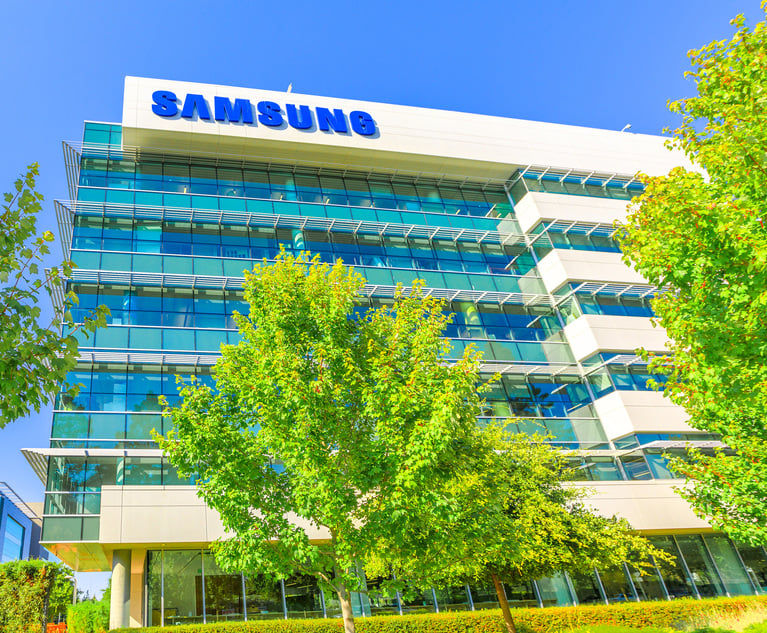Patent Giveaway
Companies donate patents to promote ecologically friendly innovation.
March 31, 2009 at 08:00 PM
6 minute read

It's not the typical response to tough economic times. But last fall–as the stock market crashed, corporate profits plunged and the financial system teetered on collapse–Xerox, DuPont and Bosch gave away some valuable assets. And they didn't even get a tax deduction.
They may, however, be helping to save the world. These three companies joined IBM, Sony, Pitney Bowes and Nokia in donating some of their hard-earned patents to a new non-profit venture: the Eco-Patent Commons (EPC).
The EPC is a collection of donated patents, each of which offers a direct or indirect environmental benefit, such as energy conservation, recycling or pollution remediation. These patents are posted on a free, searchable Web site maintained by the World Business Council for Sustainable Development (www.wbcsd.org/web/epc/). The site makes it easy for anyone to find innovative green technology. And this patented technology can be used for free.
The goal is to promote innovation in ecologically friendly technologies, with businesses contributing patents, improving on one another's ideas and implementing green innovations without licensing hassles.
Companies that use donated patents can certainly benefit from the EPC. But donors–which retain significant rights in their donated inventions–can benefit, too. If they select the right patents to donate, donor businesses can get good PR, reduce their environmental impact and maybe even lower their own production costs. And, oh yes, create a healthier planet for everyone.
“In today's climate, it's a good business opportunity. It's win-win,” says Joe Stulb, manager of environmental health and safety at Xerox, which has donated 22 patents to the EPC.
Interdisciplinary Innovation
Why bother with the EPC? The patent system–which grants exclusive rights to inventions–has been around a long time, and it's done a pretty good job of promoting innovation.
Green technology, however, isn't your typical branch of science.
“[It] is different from other fields in an important way,” says Eric Lane, author of the Green Patent Blog and an associate at Luce, Forward, Hamilton & Scripps. “It is interdisciplinary and covers such a wide variety of technology–from biotech to business methods, from material science to physics, from mechanical engineering (wind power) to photovoltaics, geology (geothermal) and ocean science (tidal power)–that it creates some unique challenges.”
Because the technologies are so varied, it's hard for companies to stay current with the panoply of green innovations–much less determine appropriate licensing terms.
“In a more discrete area, like pharmaceuticals or biotechnology, patent pools and patent licensing can be pretty effective, but where so many different areas are involved, there may not be the same kind of knowledge or familiarity with different fields,” Lane says. “So the [EPC] serves a useful purpose of promoting interdisciplinary technology. It lets companies experiment.”
Retained Rights
Many patents for green technology will never be donated to the EPC, and that's fine with EPC's backers. They expect businesses will hang on to patents that generate significant revenue.
Often, however, companies own green patents that they don't use, sell or license. “If we won't commercialize it, and it's within EPC guidelines, that makes it a really good candidate for donating to the Commons,” says Julie Rakestraw, business manager at DuPont Central Research & Development.
Companies could even donate patents that they are monetizing, because donors to the EPC keep important rights in their donated patents.
“The EPC has a nice feature: It only applies to the ecological uses of patents that are donated,” says Dave Kappos, IBM's vice president of Intellectual Property and Licensing. “Some inventions that have been donated have mainline uses, not just ecological uses. A donor can continue to have exclusive use of the patent for non-ecological purposes and still get the benefit of donating it. It's one of those rare times when you can have your cake and eat it too.”
Donors also retain the right to assert their donated patents against anyone who sues them for infringement. So if a plaintiff uses a donated IBM patent in its green technology and subsequently files any patent infringement suit against IBM, Big Blue could countersue for infringing the donated patent.
There's a restriction, however, if both plaintiff and defendant have donated patents to the EPC. If the plaintiff in such an infringement action sues on a patent that has nothing to do with green technology–that falls outside the EPC's categories of green technology–the defendant cannot countersue the plaintiff for infringing a patent the defendant donated to the EPC. If the plaintiff is suing on a patent that falls within any of the EPC's categories of green technology, on the other hand, the defendant can countersue.
Bottom Line Benefits
Donating a patent to the EPC can be good for a company's bottom line by helping to lower costs for producing or disposing of its products. Consider, for instance, a patent that IBM donated last year.
IBM discovered a way to use cardboard packaging to protect sensitive semiconductor components while in transit. The packaging worked better than Styrofoam peanuts and was better for the environment.
IBM didn't want to exploit the patent itself because the company was not in the packaging business. And after some analysis, the company concluded it would be more profitable to donate the patent than to license it.
They reasoned that if packaging companies had to license the technology they would have to pay royalties, plus there would be significant transaction costs involved in obtaining the license. By giving the patent away, IBM makes it possible for the makers of cardboard containers to use the technology without this additional expense, thereby reducing the cost of the packaging IBM purchases.
“We are a consumer of this [packaging],” Kappos says. “By putting the patent in the Eco-Patent Commons, we are helping to drive down the manufacturing cost of this packaging, decreasing the cost to consumers. The money we would get from licensing the patent … would be less than the amount we would save through lower consumer costs. And it's better for the environment.”
The EPC has been in operation for little more than one year. So far seven companies have donated a total of 85 patents. Experts say it's not a bad start. “If you measure success by the number of donated patents, I would call it a moderate success,” Lane says.
In the end, however, the EPC's success may depend not on the quantity of donated patents, but on their quality. “If the EPC receives fundamental patents on some technology that needs to be widely adopted, there is value here,” says Barton Showalter, a partner at Baker Botts. “If everyone is just throwing in patents that are not particularly valuable or broad, [the EPC] may not be worthwhile.”
This content has been archived. It is available through our partners, LexisNexis® and Bloomberg Law.
To view this content, please continue to their sites.
Not a Lexis Subscriber?
Subscribe Now
Not a Bloomberg Law Subscriber?
Subscribe Now
NOT FOR REPRINT
© 2025 ALM Global, LLC, All Rights Reserved. Request academic re-use from www.copyright.com. All other uses, submit a request to [email protected]. For more information visit Asset & Logo Licensing.
You Might Like
View All
Best Practices for Adopting and Adapting to AI: Mitigating Risk in Light of Increasing Regulatory and Shareholder Scrutiny
7 minute read
FOMO Run Amok? Resolve of Firms Chasing AI Dreams Tested by Sky-High Costs


Trending Stories
Who Got The Work
Michael G. Bongiorno, Andrew Scott Dulberg and Elizabeth E. Driscoll from Wilmer Cutler Pickering Hale and Dorr have stepped in to represent Symbotic Inc., an A.I.-enabled technology platform that focuses on increasing supply chain efficiency, and other defendants in a pending shareholder derivative lawsuit. The case, filed Oct. 2 in Massachusetts District Court by the Brown Law Firm on behalf of Stephen Austen, accuses certain officers and directors of misleading investors in regard to Symbotic's potential for margin growth by failing to disclose that the company was not equipped to timely deploy its systems or manage expenses through project delays. The case, assigned to U.S. District Judge Nathaniel M. Gorton, is 1:24-cv-12522, Austen v. Cohen et al.
Who Got The Work
Edmund Polubinski and Marie Killmond of Davis Polk & Wardwell have entered appearances for data platform software development company MongoDB and other defendants in a pending shareholder derivative lawsuit. The action, filed Oct. 7 in New York Southern District Court by the Brown Law Firm, accuses the company's directors and/or officers of falsely expressing confidence in the company’s restructuring of its sales incentive plan and downplaying the severity of decreases in its upfront commitments. The case is 1:24-cv-07594, Roy v. Ittycheria et al.
Who Got The Work
Amy O. Bruchs and Kurt F. Ellison of Michael Best & Friedrich have entered appearances for Epic Systems Corp. in a pending employment discrimination lawsuit. The suit was filed Sept. 7 in Wisconsin Western District Court by Levine Eisberner LLC and Siri & Glimstad on behalf of a project manager who claims that he was wrongfully terminated after applying for a religious exemption to the defendant's COVID-19 vaccine mandate. The case, assigned to U.S. Magistrate Judge Anita Marie Boor, is 3:24-cv-00630, Secker, Nathan v. Epic Systems Corporation.
Who Got The Work
David X. Sullivan, Thomas J. Finn and Gregory A. Hall from McCarter & English have entered appearances for Sunrun Installation Services in a pending civil rights lawsuit. The complaint was filed Sept. 4 in Connecticut District Court by attorney Robert M. Berke on behalf of former employee George Edward Steins, who was arrested and charged with employing an unregistered home improvement salesperson. The complaint alleges that had Sunrun informed the Connecticut Department of Consumer Protection that the plaintiff's employment had ended in 2017 and that he no longer held Sunrun's home improvement contractor license, he would not have been hit with charges, which were dismissed in May 2024. The case, assigned to U.S. District Judge Jeffrey A. Meyer, is 3:24-cv-01423, Steins v. Sunrun, Inc. et al.
Who Got The Work
Greenberg Traurig shareholder Joshua L. Raskin has entered an appearance for boohoo.com UK Ltd. in a pending patent infringement lawsuit. The suit, filed Sept. 3 in Texas Eastern District Court by Rozier Hardt McDonough on behalf of Alto Dynamics, asserts five patents related to an online shopping platform. The case, assigned to U.S. District Judge Rodney Gilstrap, is 2:24-cv-00719, Alto Dynamics, LLC v. boohoo.com UK Limited.
Featured Firms
Law Offices of Gary Martin Hays & Associates, P.C.
(470) 294-1674
Law Offices of Mark E. Salomone
(857) 444-6468
Smith & Hassler
(713) 739-1250






